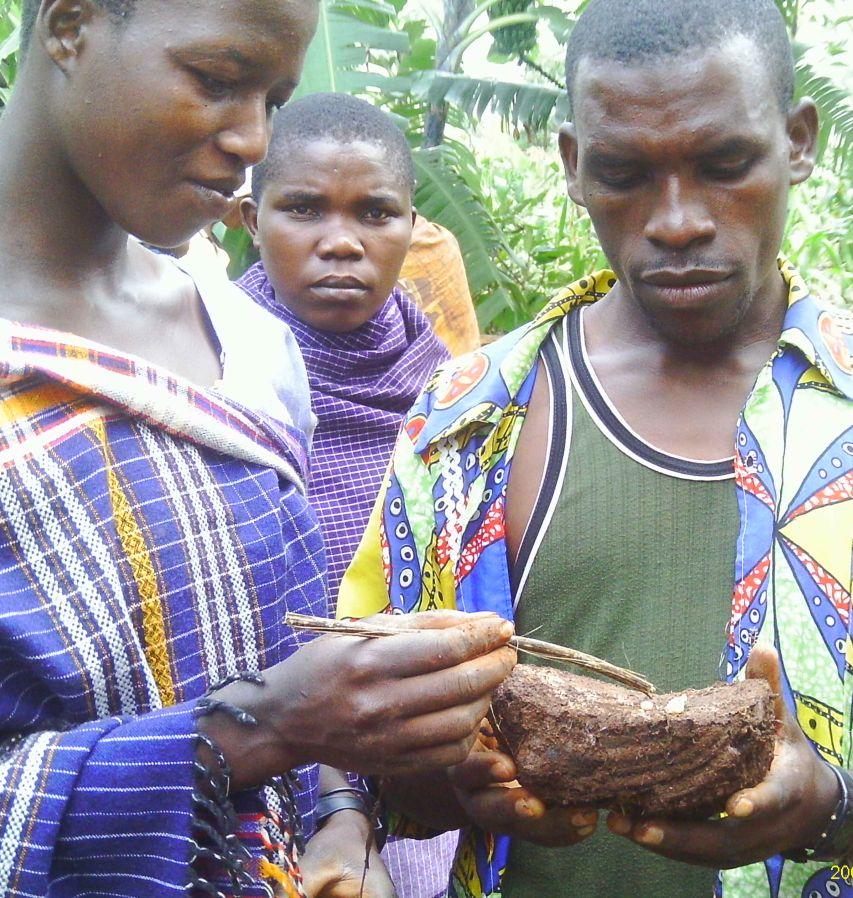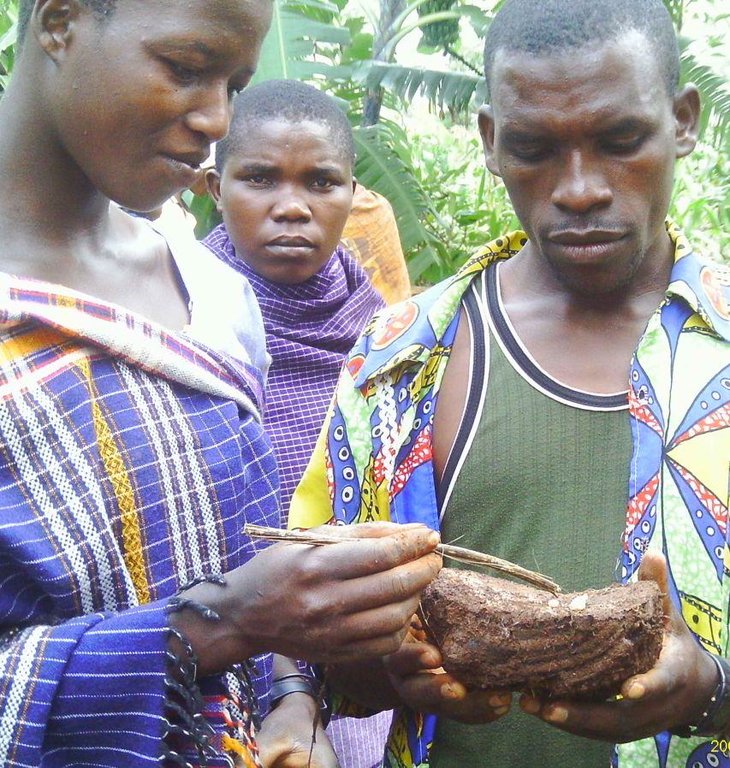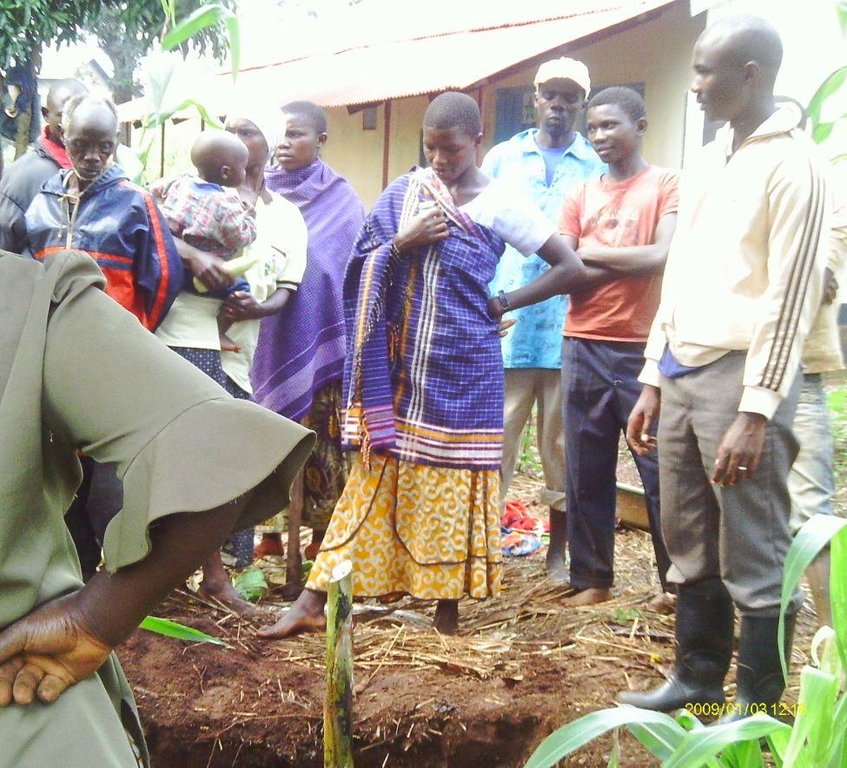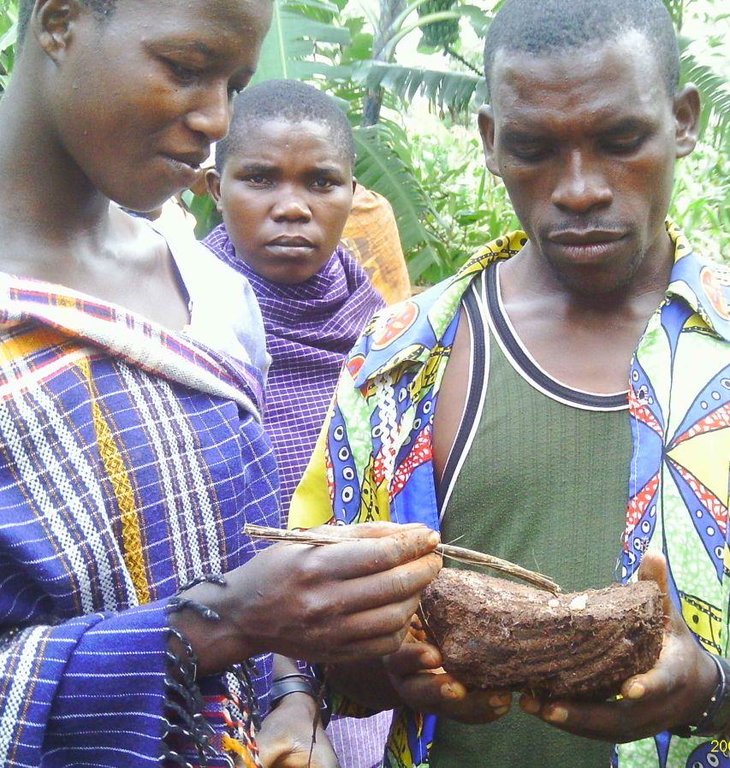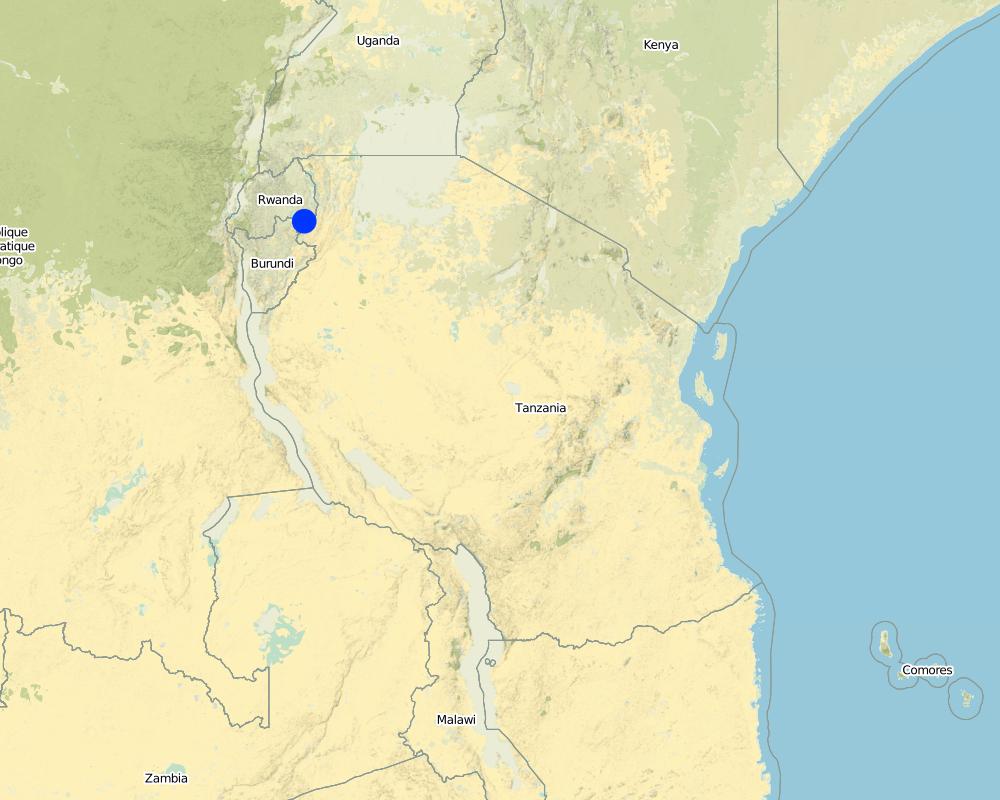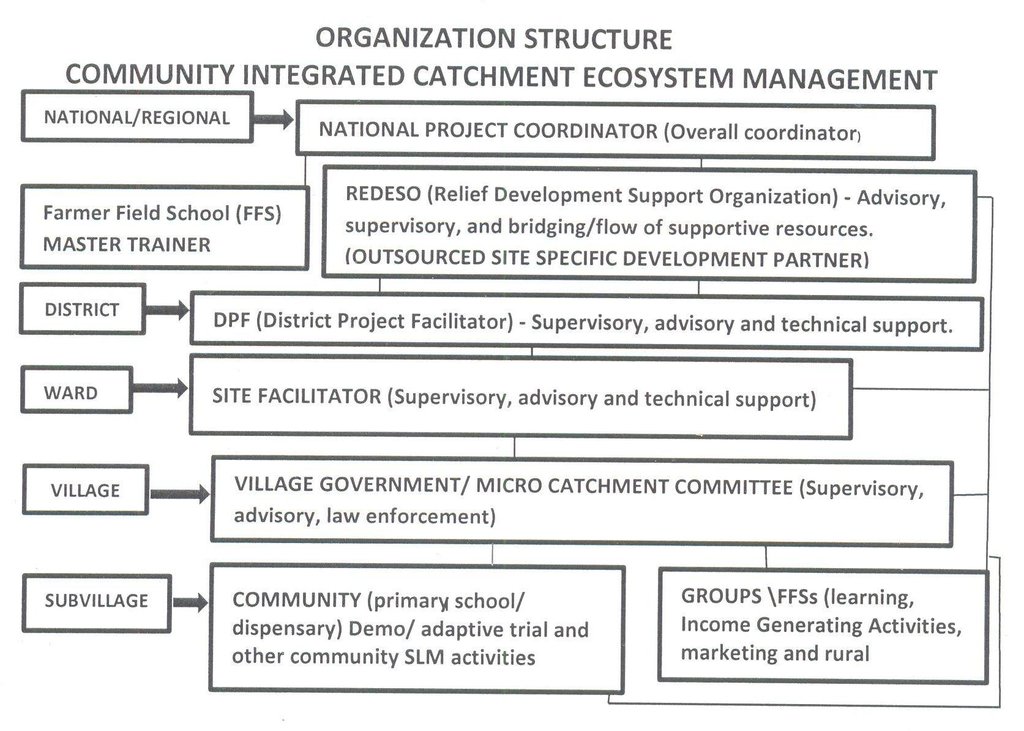Community intergrated catchment ecosystem management [Танзания]
- Создание:
- Обновить:
- Составитель: ALLAN BUBELWA
- Редактор: –
- Рецензент: Fabian Ottiger
Mfumo wa usimamizi wa ekolojia katika eneo bonde (Swahili)
approaches_2486 - Танзания
Просмотреть разделы
Развернуть все Свернуть все1. Общая информация
1.2 Контактные данные специалистов и организаций, участвующих в описании и оценке Подхода
Специалист по УЗП:
Специалист по УЗП:
Специалист по УЗП:
Mwasikundima Idephonce
Ngara District Council
Танзания
Название организации (-ий), содействовавших документированию/оценке Подхода (если применимо)
Bukoba district council (Bukoba district council) - ТанзанияНазвание организации (-ий), содействовавших документированию/оценке Подхода (если применимо)
Ngara District Council (Ngara District Council) - Танзания1.3 Условия, регламентирующие использование собранных ВОКАТ данных
Когда были собраны данные (на местах)?
10/03/2014
Составитель и ответственный/-ые специалист(-ы) согласны с условиями, регламентирующими использование собранных ВОКАТ данных:
Да
1.4 Ссылка (-и) на Анкету (-ы) по Технологиям УЗП
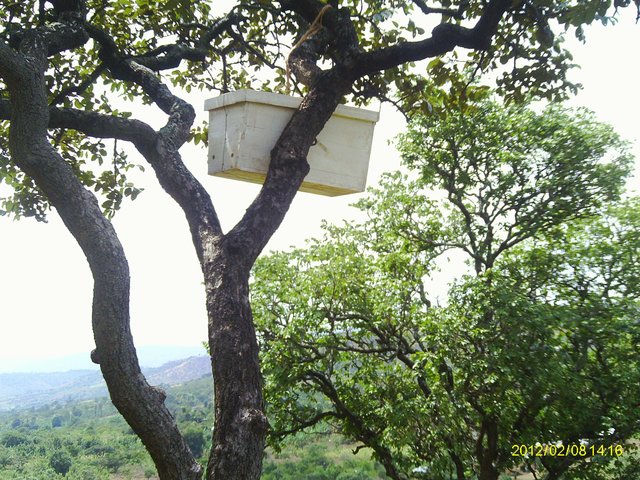
Natural forest conservation using apiaries [Танзания]
Establishment of apiaries in natural forests to retard forest mismanagement and improve honey production
- Составитель: Philip Ileta
2. Описание Подхода УЗП
2.1 Краткое описание Подхода
Adaptive Agro-ecosystem Micro-catchment Approach.
2.2 Подробное описание Подхода
Подробное описание Подхода:
Aims / objectives: SLM knowledge skill generation and capacity building. Improved group and community strength, sustainability, organization and their capacity to benefit and invest in SLM. Motivation of community participation in SLM through use of quick win project, income generating activities, rural micro finance institutions, marketing and active engagement of disadvantaged groups.
Methods: Wider promotion of basket of choice of SLM technologies through SLM Farmer Field School, Demonstration plots and community related activities. Make use and build on already existing and new groups, existing institutions and the community as a whole. Strategic use of easily available and accessible available community institutions/ infrastructures (school and dispensaries sites) to demonstrate and promote basket of choice of SLM technologies. Learning by doing on the job, practical training, adoption and adaptation to local reality.
Stages of implementation: Site characterization through land degradation analysis (LADA) and development of community site specific SLM plan exemplifying SLM interventions needed to address the identified degradation types. Set up and identification of approaches needed to execute identified interventions complementary approaches. Sensitization and awareness creation to the community and actual execution of approaches.
Role of stakeholders: Individual groups: are core implementers and potential beneficiaries of the project.
Extension worker: Advisory and technical backstopping.
Elected and employed leaders at the sub-village, village and ward level: bylaw/law enforcement, supervisory and land provision.
Relief for Development Societies NGO (REDESO): Service provision and development partner in SLM.
Trans boundary Agro-ecosystem Management Project (TAMP): Provision of supportive resources (financial and technical).
Ngara district council: Supervisory, technical, policy interpretation, monitoring and evaluation, documentation, analysis and shairing .
Rugenge/Kirusha Micro catchment Committee: Supervisory, advisory and law enforcement.
2.3 Фотографии, иллюстрирующие Подход
2.5 Страна/ регион/ место, где применялся Подход
Страна:
Танзания
Административная единица (Район/Область):
Tanzania
Более точная привязка места:
Ngara
Map
×2.6 Даты начала и окончания реализации Подхода
Год начала реализации:
2010
Год окончания (Если Подход больше не применяется):
2014
2.7 Тип Подхода
- в рамках проекта/ программы
2.8 Каковы цели/ задачи Подхода
The Approach focused mainly on SLM with other activities (Motivating quick win income generation activities, rural microfinance institutions, marketing and HIV/AIDS controll.)
Knowledge/skill generation, demonstration and sustainability of SLM activities.
Motivate active participation of the community.
Inculcate a sense of community ownership/ community take charge of SLM activities.
The SLM Approach addressed the following problems: Lack of technical knowledge
Low investment capacity
Malpractice and mismanagement of local resources (e.g. fire burning, ploughing along the slope).
Adequate supervision, monitoring and law enforcement.
2.9 Условия содействующие применению Технологии/ Технологий в рамках Подхода или затрудняющие его
Социальные/ культурные/ религиозные нормы и ценности
- затрудняют
Negative cultural believes that fire burning can lead to one living long or reach older age.
Treatment through the SLM Approach: Change of mind set through FFS training, demos and community sensitization.
Наличие/ доступность финансовых ресурсов и услуг
- затрудняют
Low investment capacity and inability to access supportive resources
Treatment through the SLM Approach: Easy access to TAMP supportive resources.
Институциональные условия
- затрудняют
Narrow coverage of the district, local institutions not involved in in SLM.
Treatment through the SLM Approach: Higher coverage, ope-rationalization of SLM in LGA system.
Нормативно-правовая база (землевладение, права на земле- и водопользование)
- содействуют
The existing land ownership, land use rights / water rights helped a little the approach implementation: Hindrance is usually observant for approaches which need long term commitment of land resources (e.g perennial crops) but is minimal for short term (annuals and biannual).
Open access land resources are difficult to manage.
- затрудняют
Reluctance of the village to issue land, less protection of open access land resources.
Treatment through the SLM Approach: land issuing for FFS/Demo use legally recognized through signing of Memorandum Of Understanding (MOU) between the village and land users/SLM groups. Bylaws reinforcement to protect mismanagement of open access land resources.
Осведомленность в области УЗП, доступность технической поддержки
- затрудняют
Inadequate understanding and use of SLM technical knowledge (both scientific and indigenous) to address land degradation problems.
Treatment through the SLM Approach: Up scaling use of scientific SLM knowledge.
Documentation, evaluation, analysis and sharing of successful indigenous SLM technical knowledge.
Объем работ, доступность рабочей силы
- затрудняют
High workload to extension officers (due to their shortage).
Treatment through the SLM Approach: Build a local resource base in facilitating SLM activities through introduction of community SLM facilitators and Micro-catchment committee.
другие
- затрудняют
Low motivation due to long term realization of SLM benefits.
Treatment through the SLM Approach: introduce SLM related quick win projects and income generation activities (IGA).
3. Участие и распределение ролей заинтересованных сторон
3.1 Заинтересованные стороны, участвующие в реализации Подхода и их роли
- местные землепользователи/ местные сообщества
Core implementors. all gender, youth and elders . Widows, Orphans, People living with HIV/AIDS were actively indiscriminately involved in FFS, Demos and community related activities..
- эксперты по УЗП/ сельскому хозяйству
all gender, youth and elders
- учителя/ преподаватели/ школьники / студенты
all gender, youth and elders
- общественные организации
dvisory, technical back stopping, supervisory and monitoring.
- местные власти
Advisory, technical back stopping, supervisory and monitoring.
- государственные власти (отвечающие за планирование или принятие решений)
dvisory, technical back stopping, supervisory and monitoring.
- международные организации
dvisory, supervisory and monitoring.
Если участвовало несколько заинтересованных сторон, назовите ведущую организацию:
Land user (all genders, youth and elders): consulted and made informed decision about the approach to be used. National specialists: potential facilitators in designing and community sensitization. International specialists: consultative and subject matter specialist (e.g. FFS specialist)
3.2 Участие местных землепользователей/ местных сообществ на разных стадиях реализации Подхода
| Участие местных землепользователей/ местных сообществ | Перечислите участников и опишите их вовлеченность | |
|---|---|---|
| инициирование/ мотивация | пассивное | Community, groups, employed and elected leaders: participated in sensitization and awareness creation process. |
| планирование | интерактивное | Community, groups, employed and elected leaders: active participants and decision makers in planning e.g. selection of FFS community facilitators and formation of micro-catchment committee. |
| выполнение | внешняя поддержка | Community, groups, employed and elected leaders: core and key implementers of the approach. |
| мониторинг/ оценка | интерактивное | Community, groups, employed and elected leaders: self mobilized and client interactive monitoring. |
| Research | интерактивное | Community, groups, employed and elected leaders: site identification and active implementers of adaptive trials (e.g use of fanya juu/chini terraces, vertivar grass e.t.c). Adopters, users and promoters of the best bets technologies. |
3.3 Схема реализации (если имеется)
Описание:
organization structure of community integrated catchment ecosystem management.
Автор:
Allan Isaka Bubelwa (Box 38 Kyaka Missenyi Kagera Tanzania)
3.4 Принятие решений по выбору Технологии/ Технологий УЗП
Укажите, кто принимал решение по выбору применяемой Технологии/ Технологий:
- в основном землепользователи при поддержке специалистов по УЗП
Поясните:
Land users working in collaboration with SLM specialist through a participatory dialogue and decision making process.
Decisions on the method of implementing the SLM Technology were made by mainly by land users supported by SLM specialists. During inception of the project, land users were actively involved in deciding on the type of method to adopt e.g. selection of site and test crops for FFS, Demo and community related SLM activities.
4. Техническая поддержка, повышение компетенций и управление знаниями
4.1 Повышение компетенций/ обучение
Проводилось ли обучение землепользователей/ других заинтересованных лиц?
Да
Укажите, кто проходил обучение:
- землепользователи
- местный персонал/консультанты
- employed and elected leaders
Если существенно, укажите гендерный и возрастной состав, статус, этническую принадлежность и т.д.
Both gender, all age (youth and elders)
Тип обучения:
- в ходе работы
- обмен опытом между фермерами
- опытные участки
Рассматриваемые темы:
SLM related subjects
4.2 Консультационные услуги
Есть ли у землепользователей возможность получать консультации?
Да
Укажите, где именно оказываются консультационные услуги:
- на полях землепользователей
Описание/ комментарий:
Name of method used for advisory service: Farmer field schools (FFS); Key elements: Practical training and learning by doing., Basket of choice of Technologies/Demos., Group oriented and site specific; Adoption depends on farmers choice and ability to invest.
Advisory service is inadequate to ensure the continuation of land conservation activities; There is limited knowledge and low funding capacity.
4.3 Институциональная (организационная) поддержка
В ходе реализации Подхода были ли организованы новые институциональные структуры или поддержаны уже существующие?
- да, умеренно
Укажите уровень, на котором структуры были укреплены или вновь созданы:
- местные
Укажите тип поддержки:
- повышение компетенций/ обучение
Подробнее:
Training provision to micro-catchment committee.
4.4 Мониторинг и оценка
Являются ли мониторинг и оценка частью Подхода?
Да
Комментарии:
bio-physical aspects were ad hoc monitored by project staff, government, land users through observations; indicators: hactarage conserved
bio-physical aspects were ad hoc monitored by project staff, government, land users through measurements; indicators: hactarage conserved
technical aspects were regular monitored by project staff, government, land users through observations; indicators: number of adopters
technical aspects were regular monitored by project staff, government, land users through measurements; indicators: number of adopters
socio-cultural aspects were regular monitored by project staff, government, land users through observations; indicators: % involvement of women
socio-cultural aspects were regular monitored by project staff, government, land users through measurements; indicators: % involvement of women
economic / production aspects were regular monitored by project staff, government, land users through observations; indicators: % increase in yield and income
economic / production aspects were regular monitored by project staff, government, land users through measurements; indicators: % increase in yield and income
area treated aspects were regular monitored by project staff, government, land users through observations; indicators: hactarage conserved
area treated aspects were regular monitored by project staff, government, land users through measurements; indicators: hactarage conserved
no. of land users involved aspects were regular monitored by project staff, government, land users through observations; indicators: number of adopters
no. of land users involved aspects were regular monitored by project staff, government, land users through measurements; indicators: number of adopters
management of Approach aspects were regular monitored by project staff, government, land users through observations; indicators: Number of FFS, Demos and IGA
management of Approach aspects were monitored through measurements; indicators: umber of FFS, Demos and IGA
There were several changes in the Approach as a result of monitoring and evaluation: Introduction of FFS farmer facilitators and Micro-catchment committees.
There were few changes in the Technology as a result of monitoring and evaluation: In the course of implementation adjusting or modifying technologies to suit agro-ecological condition or landforms
4.5 Научные исследования
Были ли научные исследования частью Подхода?
Да
- adaptive SLM trials
Напишите подробнее и назовите тех, кто выполнял исследования:
Adaptive SLM trials run by community/district/ARI Maruku through demos where farmers can select the best bets to apply and try on their own fields.
Research was carried out on-farm
5. Финансирование и внешняя материальная поддержка
5.1 Годовой бюджет мероприятий по УЗП в рамках Подхода
Если точный годовой бюжет неизвестен, укажите примерный диапазон затрат:
- 10000-100000
Комментарий (например, основные источники финансирования/ ключевые доноры):
Approach costs were met by the following donors: international (TAMP): 50.0%; government (Region/ARI Maruku.): 10.0%; local government (district, county, municipality, village etc) (Ngara district council, Villages and Ward): 20.0%; local community / land user(s) (Local community and groups withi the microcatchment ): 20.0%
5.2 Финансирование и внешняя материальная поддержка, предоставляемая землепользователям
Предоставлялась ли землепользователям финансовая/ материальная поддержка для применения Технологии /Технологий?
Да
5.3 Субсидии на отдельные затраты (включая оплату труда)
- оборудование
| Укажите, какие ресурсы были субсидированы | В какой степени | Опишите субсидии подробнее |
|---|---|---|
| инвентарь/ инструменты | профинансированы полностью | Working gears (gun boots, raincoats, T-shirts) |
| Computers, cameras | профинансированы полностью | |
- сельскохозяйственные
| Укажите, какие ресурсы были субсидированы | В какой степени | Опишите субсидии подробнее |
|---|---|---|
| семена | профинансированы частично | |
| удобрения | профинансированы частично | |
| Manure | профинансированы частично | |
- другие
| Другой (какой именно) | В какой степени | Опишите субсидии подробнее |
|---|---|---|
| Livestock | профинансированы полностью | Chicken, goats and bees |
Если труд землепользователя был существенным вкладом, укажите, был ли этот вклад:
- добровольный
Комментарии:
labour was largely voluntarily and was rewarded indirectly by introduction of income generating activities.
Some inputs were fully financed, partly financed and not financed. Materials fully financed are those not available at the site or not adequately available or in shortage.
5.4 Кредитование
Предоставлялись ли в рамках Подхода кредиты на мероприятия УЗП?
Нет
6. Анализ влияния и заключительные положения
6.1 Влияние Подхода
Сумел ли Подход помочь землепользователям внедрить и поддерживать технологии УЗП?
- Нет
- Да, немного
- Да, умеренно
- Да, существенно
Knowledge and skill acquired through FFS, Demos and community related intervention played significant role in improvement of SLM. Bylaw reinforcement significantly prevented malpractices/land resource mismanagement.
Сумел ли Подход расширить возможности социально и экономически уязвимых групп?
- Нет
- Да, немного
- Да, умеренно
- Да, существенно
Improved to livelihood mechanism/alternates to widow, orphan and people living with HIV/AIDS
Сумел ли Подход разрешить правовые проблемы землевладения/ землепользования, препятствующие использованию технологий УЗП?
- Нет
- Да, немного
- Да, умеренно
- Да, существенно
The approach involve signing of memorandum of understanding (MOU) over use of land resource between farmer groups running Demos and FFS and the village government. MOU is a strong and reliable legal acquisition of land resource to be used for conservation activities.
Did other land users / projects adopt the Approach?
- Нет
- Да, немного
- Да, умеренно
- Да, существенно
On average each FFS member induced adoption to 2 household farmers.
Did the Approach lead to improved livelihoods / human well-being?
- Нет
- Да, немного
- Да, умеренно
- Да, существенно
Diversification of income sources through introduction of Quick win income generating (IGA) AND
Did the Approach help to alleviate poverty?
- Нет
- Да, немного
- Да, умеренно
- Да, существенно
Improvement of livelihood alternates and income, the situation is improve in the future.
6.2 Основные причины, побуждающие землепользователей внедрять УЗП
- рост продуктивности
increased production to meet daily needs and surplus for selling.
- рост прибыли (доходности) и рентабельности
increased surplus and income accrued through surplus generation.
- well-being and livelihoods improvement
food security and income is the first priority.
6.3 Долгосрочная устойчивость мероприятий в рамках Подхода
Могут ли землепользователи самостоятельно (без внешней поддержки) продолжать применение того, что было реализовано в рамках Подхода?
- да
Если да, опишите как:
Farmers have realized the benefit of SLM. The village historical track records and experience indicate that farmers in Kirusha village usually continue what ever they come to realize is implemented for their own benefit. Further more, establishment of local human resource in SLM in terms of FFS facilitators and micro-catchment committee and their ope-rationalization into LGA systems is an assure way towards sustainability.
Motivation induced through quick win income generating activities (goat production, chicken, piggery, fruit tree nurseries and apiaries) and easy to manage demo set at Kirushya primary school and dispensary (reachable and easily accessible) are added assurance for project sustainability.
6.4 Сильные стороны/ преимущества Подхода
| Сильные стороны/ преимущества/ возможности по мнению землепользователей |
|---|
| Learning and acquisition of knowledge (How to sustain/ enhance this strength: continuation of FFS, Demo and community activities.) |
| Cohesiveness and self help (How to sustain/ enhance this strength: Continue promotion of VICOBA and Market. ) |
| Spread of knowledge within and outside village. (How to sustain/ enhance this strength: Continue use of the approach. ) |
| Сильные стороны/ преимущества/ возможности по мнению составителя или других ключевых специалистов |
|---|
| Improved relationship, unity, cohesiveness and common voice. (How to sustain/ enhance this strength: Continue with promotion, strengthening and establishment of IGA, SACCAS and VICOBA.) |
| More farmers are involved (rapid adoption and expansion) (How to sustain/ enhance this strength: Up scaling and strengthening of FFS, Demos, and IGA. ) |
| The approach is cost effective (benefit surpass costs) (How to sustain/ enhance this strength: Promote, expand and continue use of FFS, Demos and IGA.) |
| Assured and promising elements of sustainability. (How to sustain/ enhance this strength: Strengthen ope-rationalization and use of micro-catchment committee and FFS facilitators. ) |
|
Easy access to supportive resources (Land and financial) (How to sustain/ enhance this strength: strengthen and liaise FFS with service providers (Bank, SACCOS and Marketing)) |
6.5 Слабые стороны/ недостатки Подхода и пути их преодоления
| Слабые стороны/ недостатки/ риски по мнению землепользователей | Возможные пути их преодоления/снижения? |
|---|---|
|
Negative customs and believes (it is believed that one can live longer and reach older age by setting fire and burning of a large area). |
Discourage negative custom and believes |
| Reluctance of household heads especially in patrimonial societies. | Community sensitization to gender (gender be addressed as the basic component of the approach). |
| Failure and negative experience of past development projects and programmes. | Change of mind set |
| Shortage of inputs and working facilities | Promote availability and accessibility of inputs and working facilities. |
| Слабые стороны/ недостатки/ риски по мнению составителя или ответственных специалистов | Возможные пути их преодоления/снижения? |
|---|---|
| Selfishness, individualism by some untrustworthy politicians and leaders. | Combine SLM promotion with civic education training. |
| Prone to natural calamities and disastrous events | Introduce and strengthen use of Agro-based insurance. |
| Largely relies on government or farmer willingness to release and offer land. | Sensitize and encourage use of MOU. |
| If not done in precaution can perpetuate dependency syndrome | Encourage use of self mobilized farmer groups and their strengthening and ope-rationalization into existing systems. |
| Reliable external supportive resource needed initially | Reliable and timely supply of supportive resources. |
7. Справочные материалы и ссылки
7.1 Методы сбора/источники информации
- выезды на места, полевые обследования
- опросы землепользователей
7.2 Ссылки на опубликованные материалы
Название, автор, год публикации, ISBN:
Site characterization report: Kimamba Lyoba,
Ссылки и модули
Развернуть все Свернуть всеСсылки

Natural forest conservation using apiaries [Танзания]
Establishment of apiaries in natural forests to retard forest mismanagement and improve honey production
- Составитель: Philip Ileta
Модули
Нет модулей


